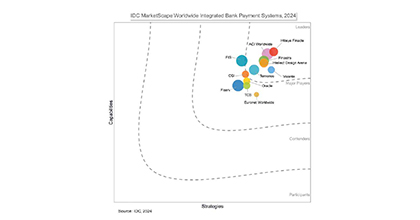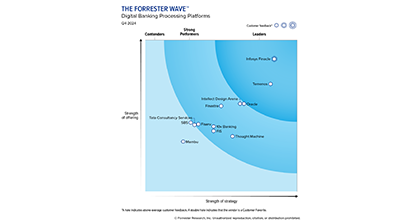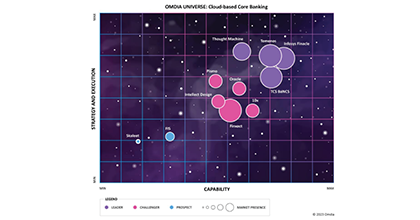In today’s rapidly evolving financial landscape, banks and other financial institutions are faced with an unprecedented challenge: turning an overwhelming flood of raw data into meaningful, actionable insights. The banking sector alone generates an enormous volume of information—some 2.5 quintillion bytes daily—and by 2025, this figure is expected to skyrocket to 463 zettabytes. Faced with such an avalanche of information, traditional methods of data analysis often fall short. As institutions struggle to sift through complex datasets, decision-making slows, customer experiences suffer, and critical opportunities slip by unnoticed.
Now imagine a game changing solution — one that can rapidly find relevant information in an evolve world, synthesize it, and present it in a way that supports confident, timely decision-making. This is where Retrieval-Augmented Generation (RAG) steps into the spotlight. By combining the power of advanced search capabilities with large language models (LLMs), RAG provides a dynamic, adaptive approach to data analysis. It not only retrieves the most relevant data from multiple sources but also processes it, delivering cohesive insights that drive smarter strategies.
The Expert’s Dilemma in a Data-Driven World
Financial experts operate in a landscape characterized by dynamic market conditions, evolving regulations, and an ever-growing repository of internal and external data. Challenges that these professionals face daily include:
- Information Overload: Sifting through countless datasets, news feeds, and customer interactions can be time-consuming and prone to human error.
- Data Silos: Valuable information often resides in disconnected systems. Without a unified view, gaining a comprehensive understanding of a situation becomes more difficult.
- Inefficient Data Access: Experts spend too much time searching for the right information, delaying critical decisions.
- Constant Model Fine-Tuning: Traditional analytical models need frequent updates to remain accurate in dynamic environments, adding complexity and cost.
Enter RAG: A Smarter, Faster Path to Insights
RAG addresses these hurdles head-on by:
- Improving Information Retrieval: RAG quickly finds and brings together relevant data from multiple sources, making the search process faster and smoother.
- Breaking Down Data Silos: It combines data from different systems, offering a unified view so that professionals can see the big picture more easily.
- Enhancing Decision-Making: With fast access to richer, more complete insights, financial experts can make decisions more quickly and with greater confidence.
- RAG minimizes the need for constant model fine-tuning: by dynamically retrieving up-to-date information from various sources, ensuring accurate insights without frequent updates to the underlying model. This approach reduces costs and effort, making it a more practical solution for financial institutions dealing with evolving data.
RAG’s unique approach marries two powerful components:
- Retrieval: Acting like a highly sophisticated search engine, RAG scans through both internal repositories—such as transactional records, customer feedback, and policy documents—and external sources like news outlets, regulatory websites, and market data feeds. By using advanced algorithms, it narrows down vast troves of information to the most relevant results.
- Generation: Once the information is retrieved, RAG deploys LLMs to process, summarize, and present insights in a user-friendly format. Instead of returning disjointed chunks of data, RAG synthesizes it into clear narratives, thorough reports, or concise recommendations. This holistic view enables financial professionals to move beyond raw data and directly into informed decision-making.
Why RAG Outperforms Traditional Approaches
Unlike older methods that require constant manual tuning or siloed searches, RAG adapts in real-time. As new data flows in, it refines its retrieval and synthesis capabilities to remain current and accurate. This yields several key benefits:
- Efficiency: RAG automates the process of locating and interpreting relevant data, slashing the time needed to reach actionable insights.
- Comprehensiveness: By drawing from both internal and external sources, RAG presents a well-rounded perspective that human analysts might miss due to time or resource constraints.
- Accuracy: Leveraging the advanced capabilities of LLMs reduces the risk of human oversight, ensuring more reliable insights.
The Future of RAG in Banking
The long-term potential of RAG to shape the financial landscape is immense. As it matures, we can anticipate several transformative shifts:
- Enhanced Risk Management: Beyond detecting fraud more effectively, RAG can forecast credit risk with greater nuance by analyzing unconventional data sources, including social media sentiment and alternative lending platforms.
- Personalized Financial Services: By integrating customer profiles, transaction histories, and market insights, RAG can tailor investment recommendations, insurance offerings, and financial plans to the individual, ultimately promoting financial inclusion and customer loyalty.
- Streamlined Regulatory Compliance: RAG can help institutions stay compliant by simplifying the analysis required for regulatory reporting, Know-Your-Customer (KYC) checks, and Anti-Money Laundering (AML) monitoring. It automates labor-intensive tasks, freeing up resources and reducing the risk of non-compliance.
Addressing Limitations and Ensuring Responsible Use
As with any AI-driven solution, RAG is not without challenges. Potential biases in underlying data can skew results, and the complexity of LLMs can make it difficult to explain how certain conclusions were reached. Furthermore, robust data security and privacy measures are essential to maintain trust in RAG-driven insights. Financial institutions must therefore invest in data governance, transparency initiatives, and ongoing model evaluations to ensure ethical and responsible use.
Conclusion
In an era defined by information overload, RAG stands out as a game-changer for the financial industry. By deftly combining advanced search capabilities with intelligent language models, it cuts through the noise, offering financial experts timely, accurate, and comprehensive insights. As banks embrace RAG, they can transform complexity into clarity, make better decisions faster, and ultimately build stronger, more resilient organizations that thrive in a world of ever-evolving data.
























